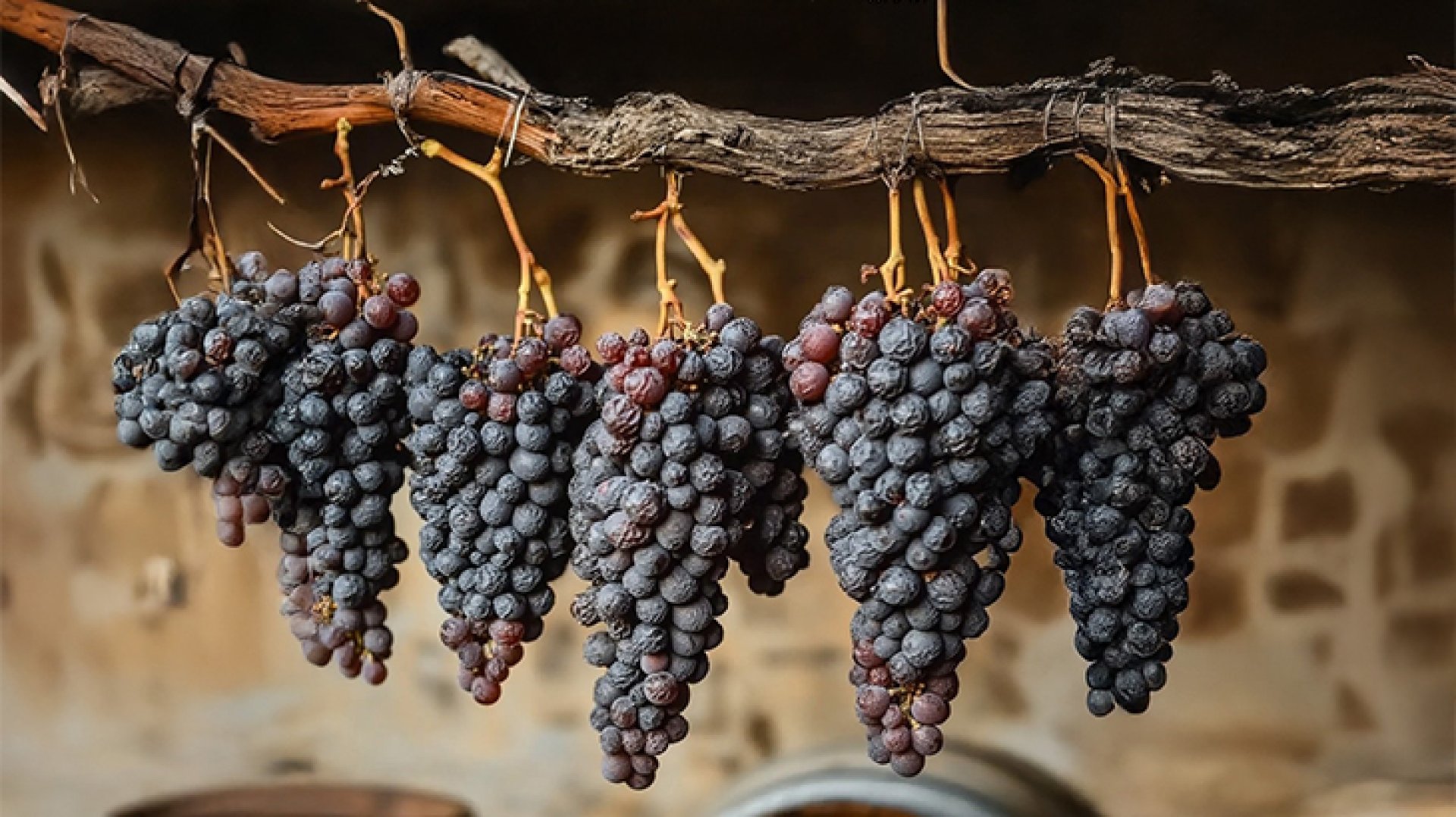Amarone
Last updated: 1 Oct 2025

Amarone della Valpolicella, commonly known as Amarone, is a renowned red wine with a distinctive taste, originating from the Valpolicella area in the Veneto region of northern Italy.
The Appassimento method was primarily used to produce a sweet wine known as "Reticum", in which grapes were dried for several months before fermentation. This process reduced the water content in the grapes, leaving behind a concentrated amount of grape juice and sugar. The resulting wine was rich, aromatic, and complex.
This sweet wine became widely popular and was distributed throughout the Roman Empire.
Over time, the local Venetians gave this sweet wine the name "Recioto", or in full, Recioto della Valpolicella. This wine later became the foundation for Amarone.
The story of Amarone's creation is said to have been the result of a winemaking accident in 1936, when a winemaker left Recioto della Valpolicella in the fermentation tank for too long. As a result, the yeast consumed all the sugar, producing a drier, richer, and more alcoholic wine. Normally, the fermentation process of Recioto is halted to preserve the wines natural sweetness.
In principle, during fermentation, yeast consumes the sugar in grape juice and converts it into alcohol. The riper the grapes, the higher the sugar contentresulting in a wine with higher alcohol levels and intense fruit flavors.
Initially, Amarone was not widely accepted, as it was considered an unintended byproductan imperfect version of Recioto. However, due to its distinct character and bold flavors, it quickly gained recognition and became highly sought after.
In 2010, Amarone della Valpolicella was awarded DOCG (Denominazione di Origine Controllata e Garantita) status, the highest classification of wine quality in Italy. The production process is strictly regulated to preserve its authenticity and excellence.
Ancient Roman Origins
The origins of Amarone date back to ancient Roman times. It is believed that the Romans developed a wine-making technique called "Appassimento", initially used as a method for preserving food, allowing grapes to be stored for longer periods.The Appassimento method was primarily used to produce a sweet wine known as "Reticum", in which grapes were dried for several months before fermentation. This process reduced the water content in the grapes, leaving behind a concentrated amount of grape juice and sugar. The resulting wine was rich, aromatic, and complex.
This sweet wine became widely popular and was distributed throughout the Roman Empire.
Evolution of Amarone from Recioto
The Appassimento method remained deeply ingrained in Roman winemaking culture and continued to be used well into the Middle Ages, particularly in what is now the Veneto region.Over time, the local Venetians gave this sweet wine the name "Recioto", or in full, Recioto della Valpolicella. This wine later became the foundation for Amarone.
The story of Amarone's creation is said to have been the result of a winemaking accident in 1936, when a winemaker left Recioto della Valpolicella in the fermentation tank for too long. As a result, the yeast consumed all the sugar, producing a drier, richer, and more alcoholic wine. Normally, the fermentation process of Recioto is halted to preserve the wines natural sweetness.
In principle, during fermentation, yeast consumes the sugar in grape juice and converts it into alcohol. The riper the grapes, the higher the sugar contentresulting in a wine with higher alcohol levels and intense fruit flavors.
Initially, Amarone was not widely accepted, as it was considered an unintended byproductan imperfect version of Recioto. However, due to its distinct character and bold flavors, it quickly gained recognition and became highly sought after.
Refining the Amarone Wine-Making Process
Over time, the production techniques of Amarone were refined, setting it apart from standard red wines.- Grapes are hand-picked, mainly indigenous varieties such as Corvina, Corvinone, and Rondinella.
- They are then dried for several months until they resemble raisins.
- Once ready, the dried grapes undergo fermentation in oak barrels for several years.
In 2010, Amarone della Valpolicella was awarded DOCG (Denominazione di Origine Controllata e Garantita) status, the highest classification of wine quality in Italy. The production process is strictly regulated to preserve its authenticity and excellence.
Characteristics and Pairing
Amarone is known for its rich aroma of ripe fruits, spices, and dark chocolate. With an alcohol content often exceeding 15%, this wine can be aged for decades, developing even greater depth and complexity over time.Perfect Pairings
Due to its bold and intense flavors, Amarone pairs best with:- Hearty red meats
- Strong and aged cheeses
Serving Recommendations
To fully appreciate its depth, Amarone should be:- Served at 1820°C
- Aerated for at least an hour before drinking to allow its full character to emerge
Related Content
Tracing the History of Southern Comfort: The Smooth, Fruity Whiskey from New Orleans, USA
Tracing the Legacy of Australian Shiraz The Red Wine That Redefined New World Winemaking


